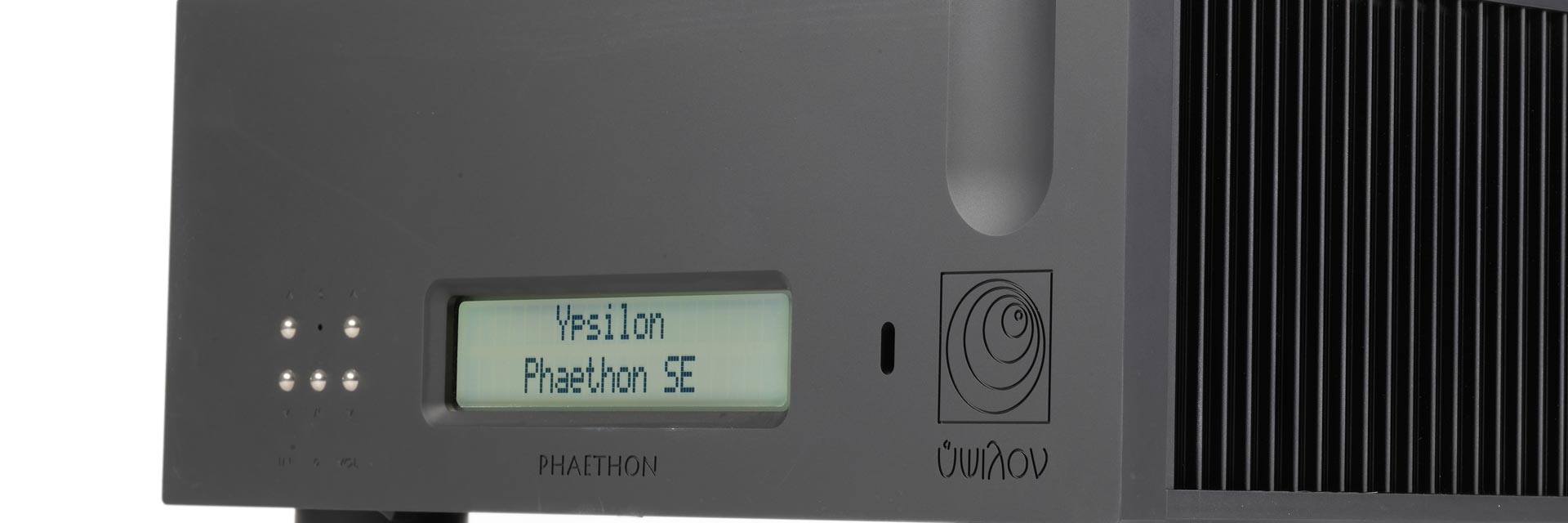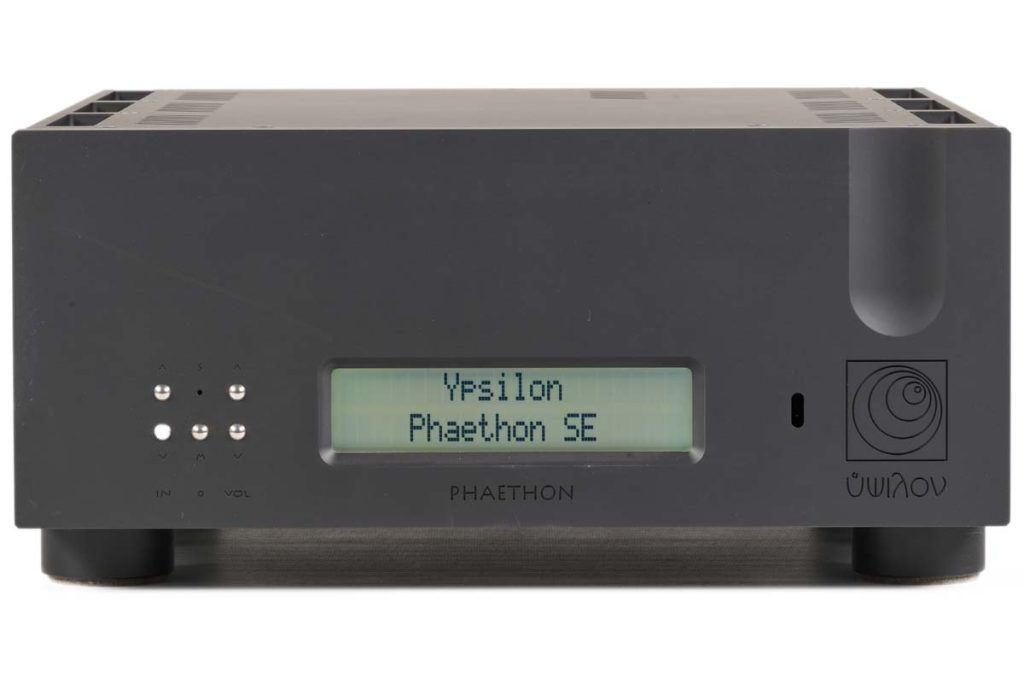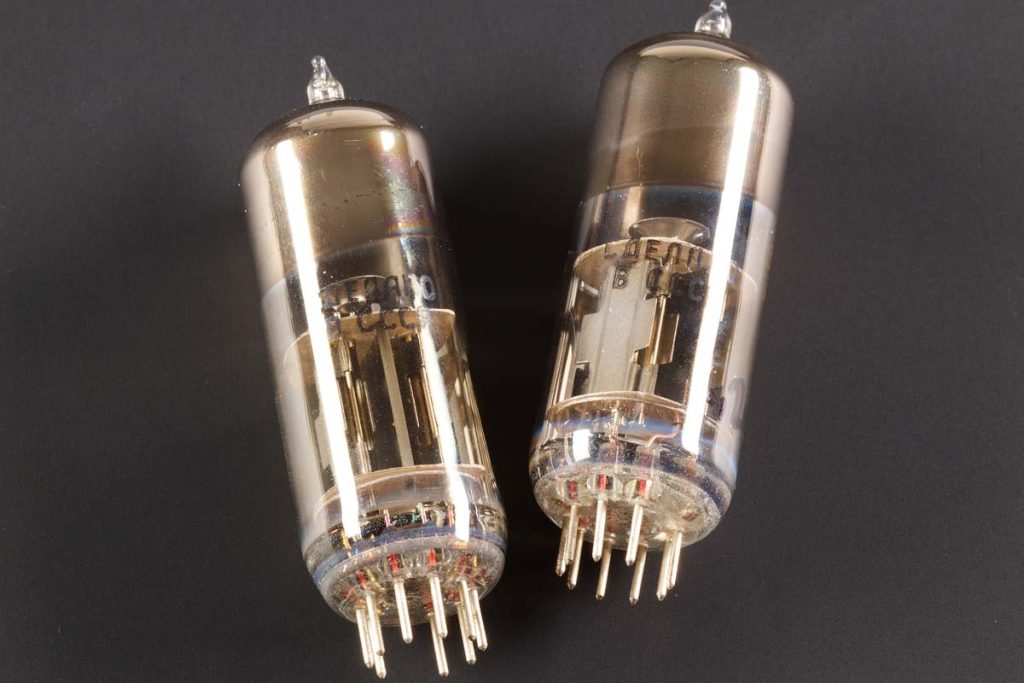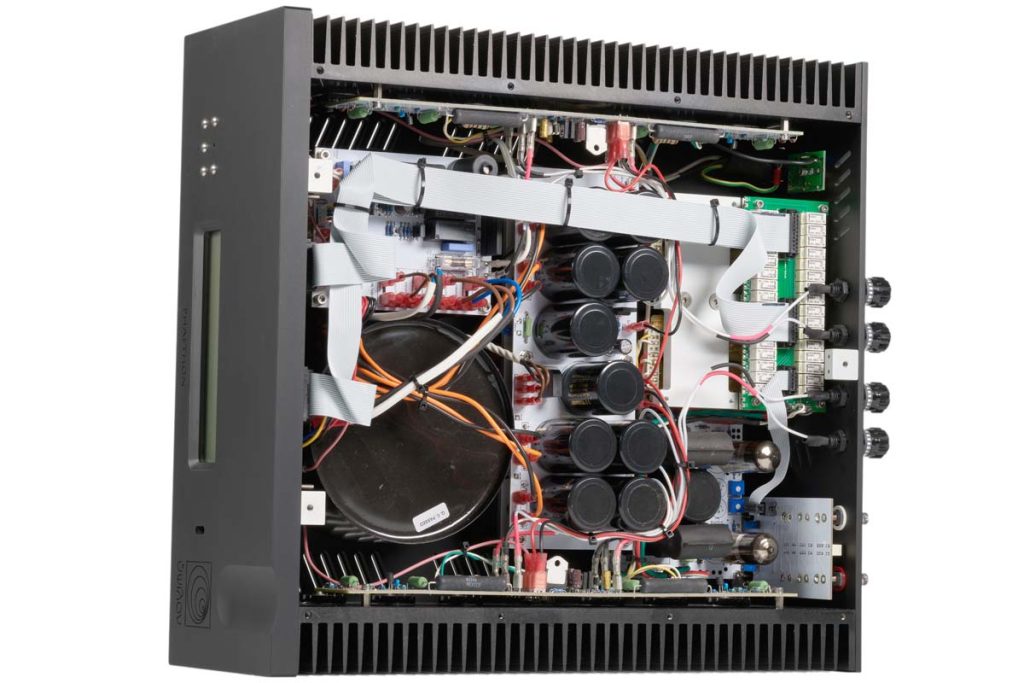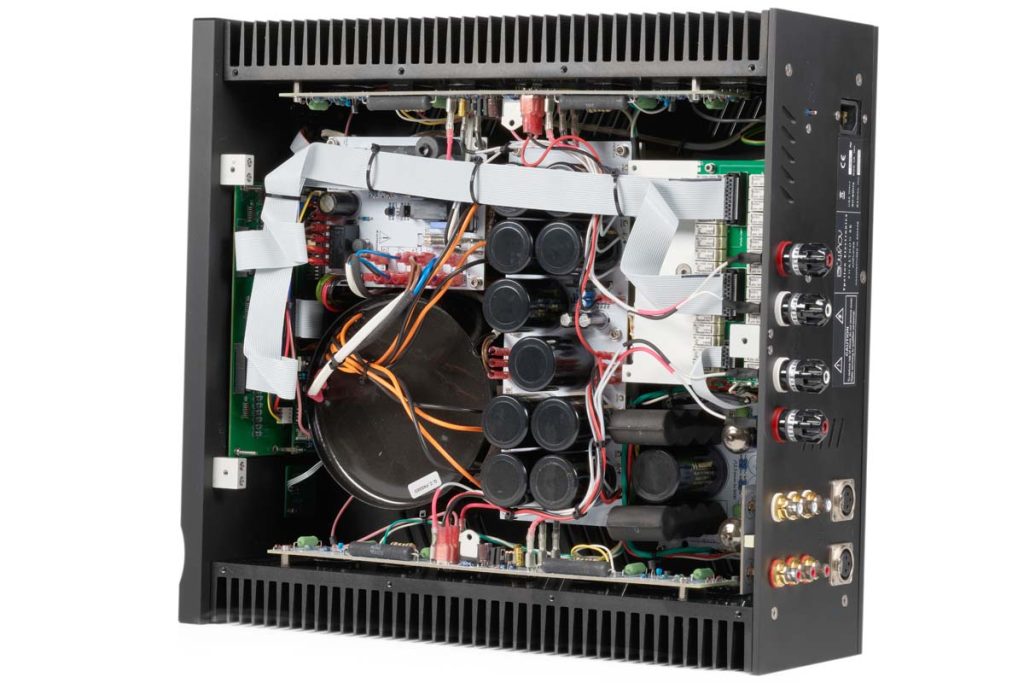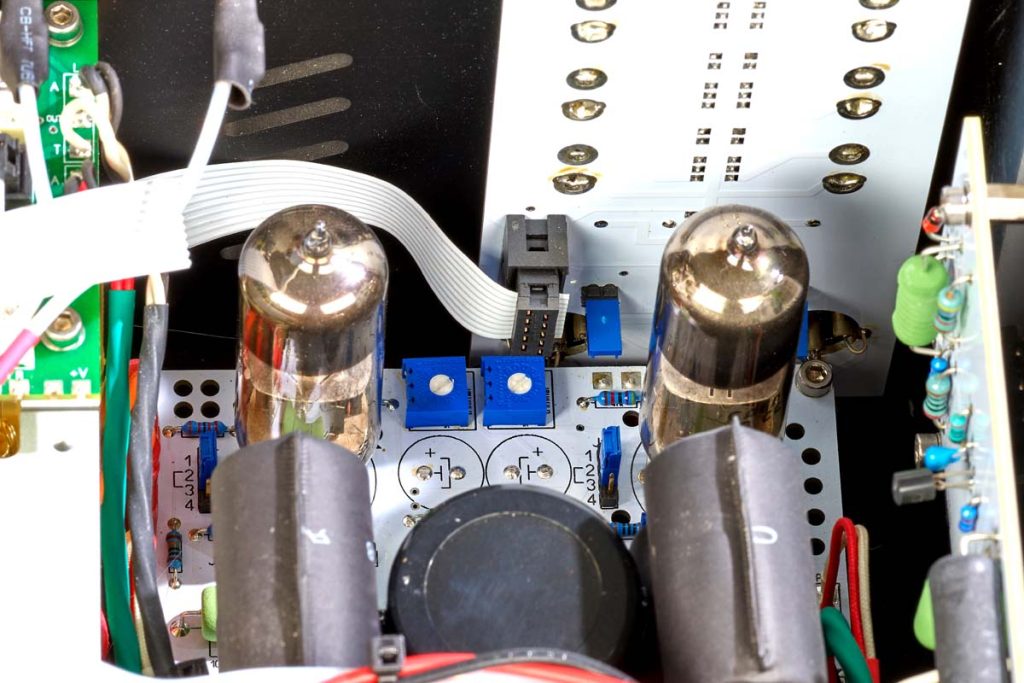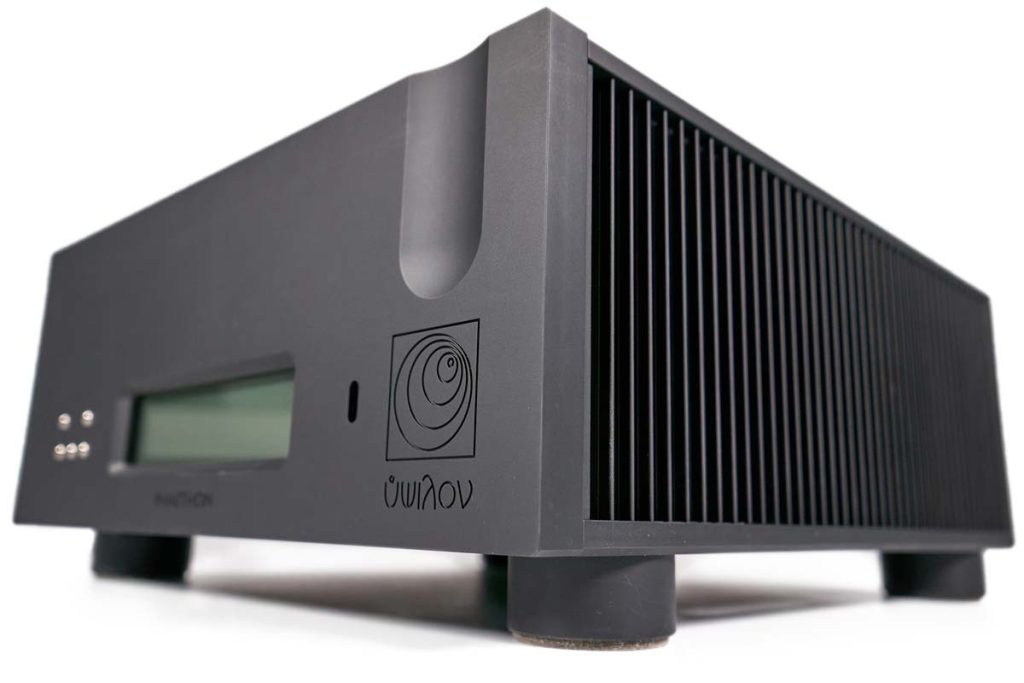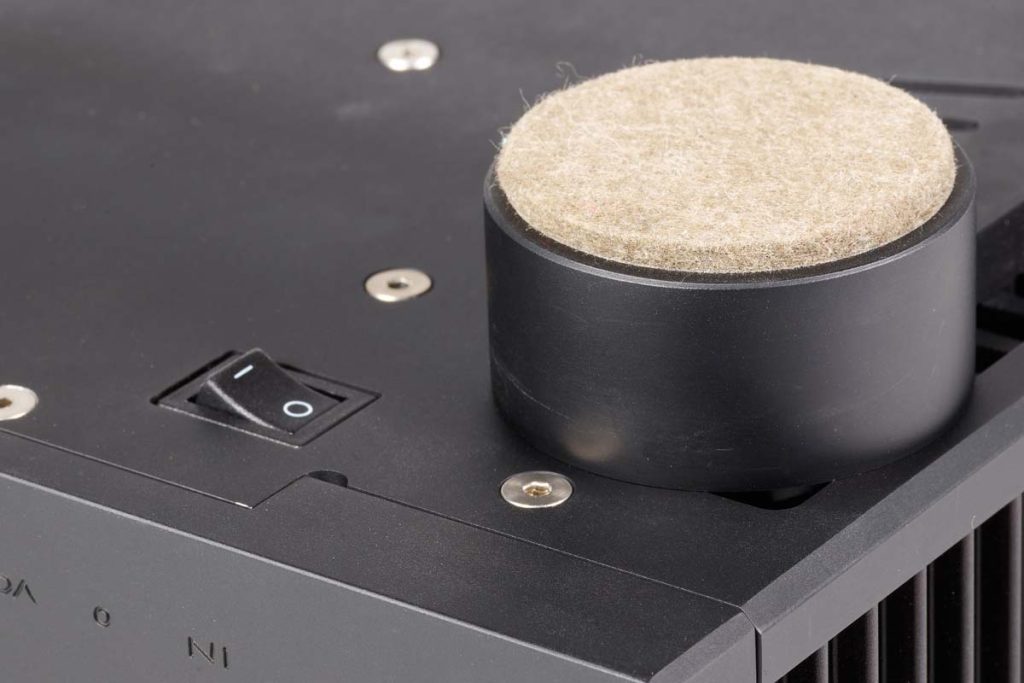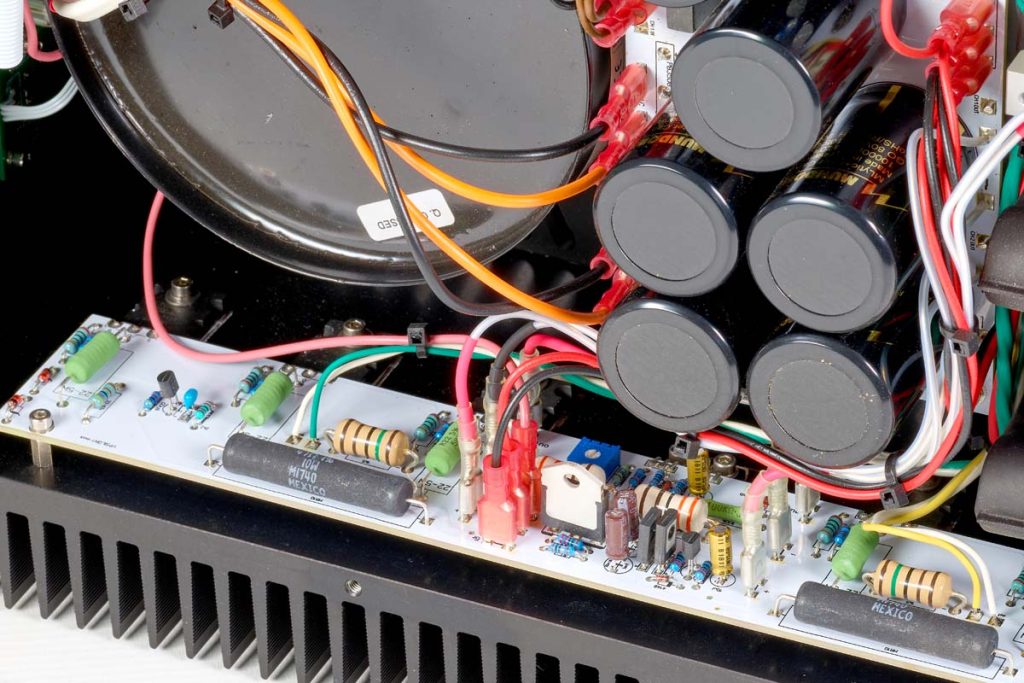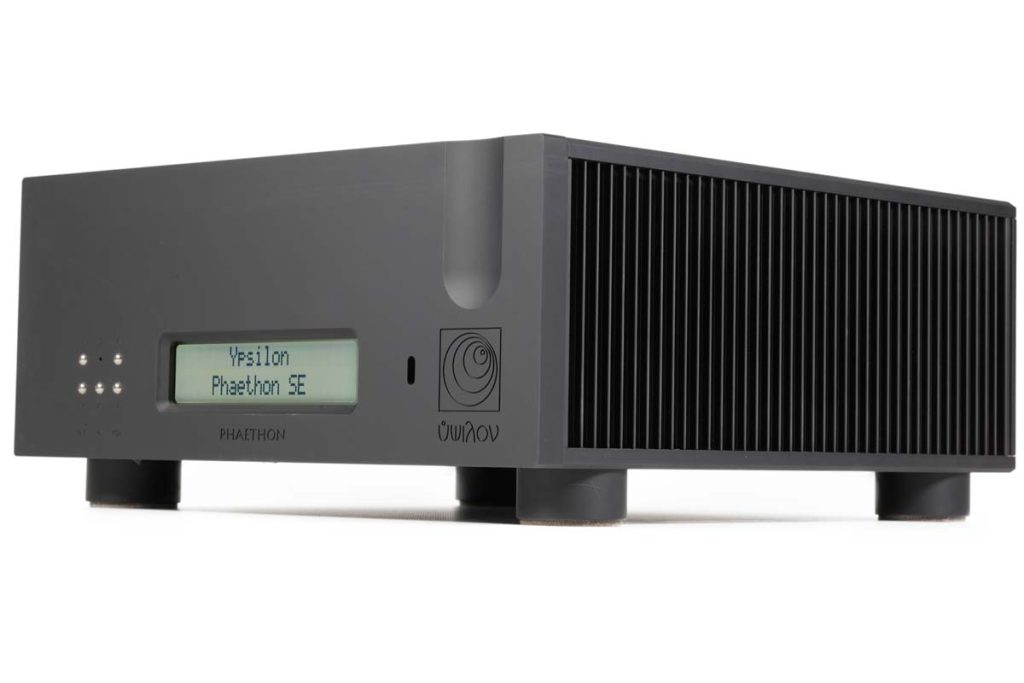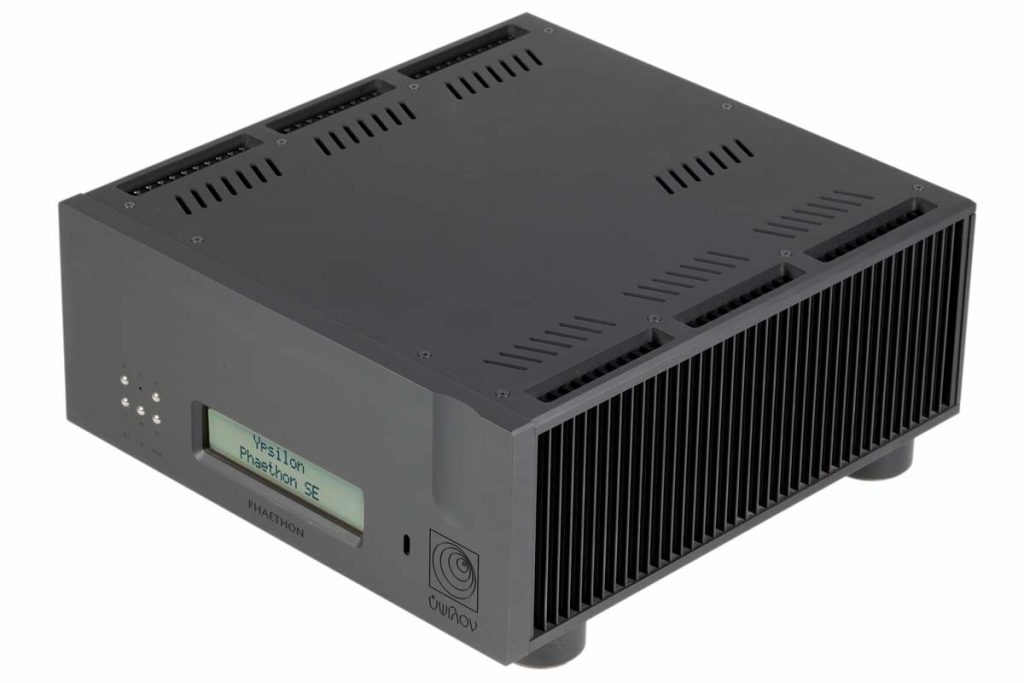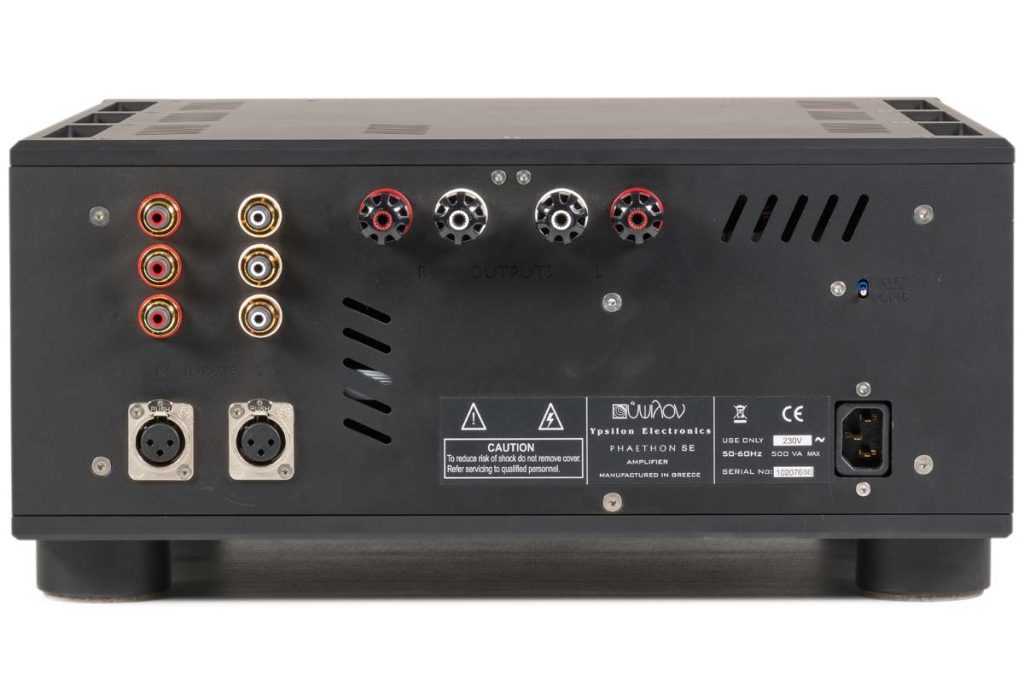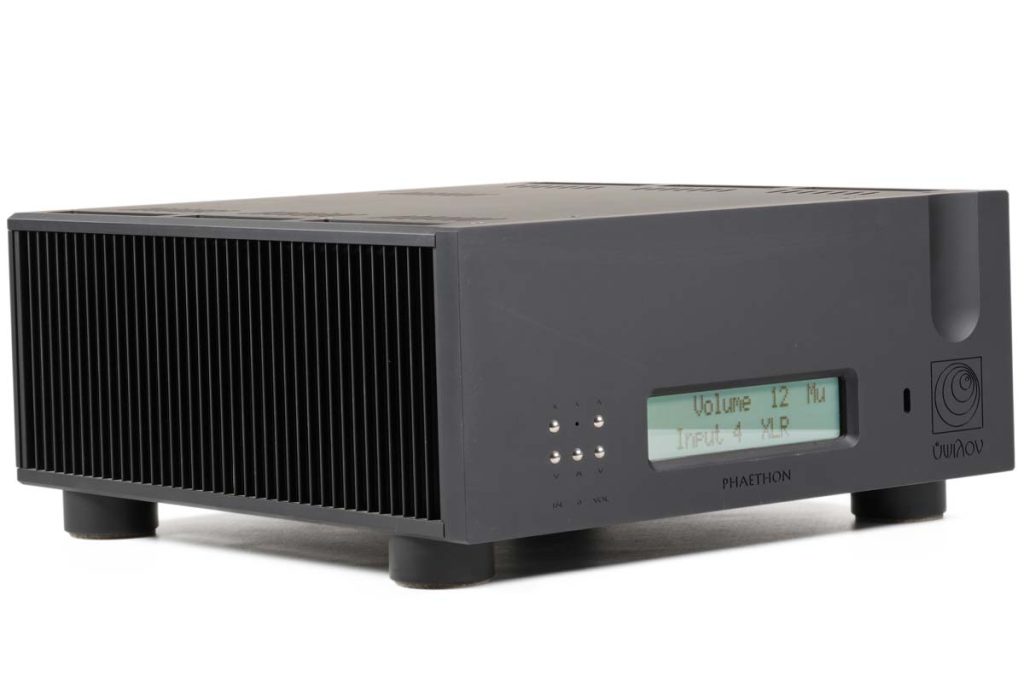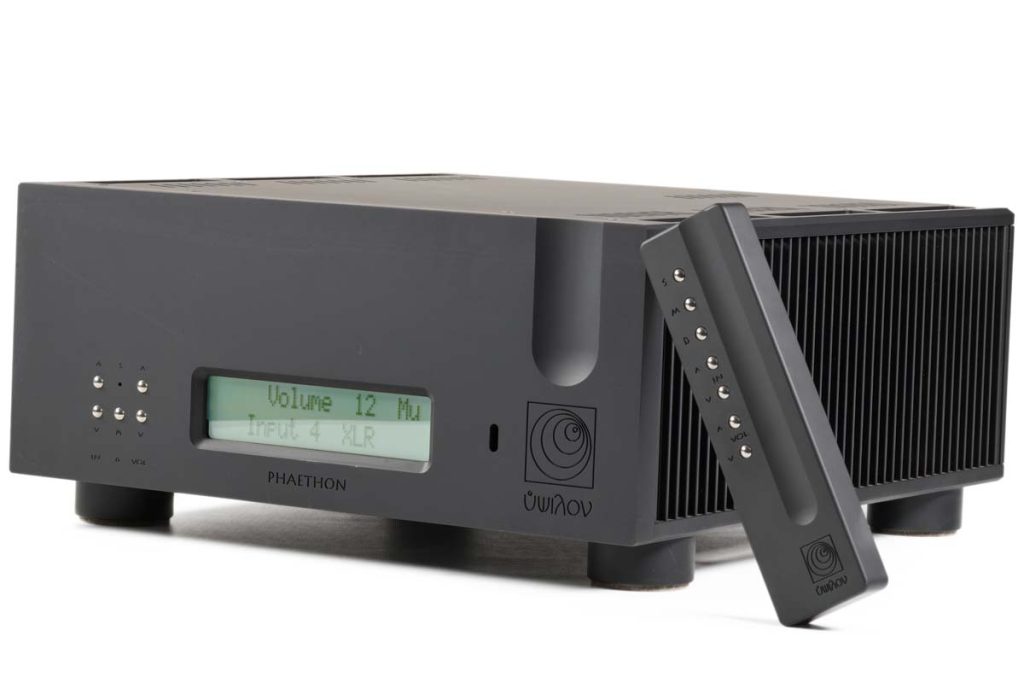Moving two steps forwards sometimes requires taking one step backwards. For Ypsilon developer Demetris Backlavas, innovation doesn’t necessarily mean exploiting the latest technologies. He believes it can be achieved by reinventing the things we are already familiar with – yielding results that are unimposing and yet simultaneously remarkable.
“Make everything as simple as possible, but no simpler” – is a quote attributed to Einstein, possibly falsely. But what’s important for me is not who actually coined this maxim – it simply resonates with me. Perhaps this is because it’s a constant reminder that the second half of the sentence is just as important as the first. In the depths of my hi-fi heart, I’m something of a purist. This is not to say that I don’t appreciate the advantages of an active loudspeaker smoothed by DSP, or have something against class-D amplifiers. Yet to really fascinate me, a hi-fi component must be ingeniously simple. In most areas of engineering, not just hi-fi, there are good reasons for simplifying designs as much as possible. Fewer components means there are potentially fewer things that can go wrong – or, regarding the audio sector, less chance of signal degradation. Moreover, designs involving fewer parts can utilize superior materials while remaining within budget.
There are enough manufacturers already who strip everything back to the bare essentials with this philosophy. However, the reality is that minimalism at any price usually involves compromises. For example – a first-order crossover. No problem, so long as you use drivers that can overlap across six octaves without causing problems. And good lucking finding those! Perhaps a single-ended amplifier with no overarching negative feedback? Why not, assuming you’re prepared to turn a blind eye to the measurements and tolerate three-digit input power with single-digit output power.
Retaining the magic of the single-ended amp
Why am I telling you all this? Because the Ypsilon Phaethon is one of those devices that truly fascinates me. It doesn’t look that puristic at first, but becomes all the more so the longer you look at it. This integrated amplifier is the first Ypsilon Electronics component that I have had my hands on. But it quickly became clear that Demetris Backlavas is an engineer after my own heart.
Like many others, the story of this Greek manufacturer has its origins in the professional audio sector, where Backlavas was working as an electrical engineer. He was tasked with developing electronic equipment capable of capturing the sound characteristics of a live event. To him the tool of choice remained the single-ended triode amplifier (SET), due to its fine resolution and musically engaging playback. This was fine as far as it went. However, Backlavas also knew that it wasn’t really possible to develop a SET amp that could confidently drive even challenging loudspeakers. And this was definitely not without worrying about the melting point of the heat sinks.
Not that this stopped him and his co-founder Andy Hassapis from trying! It would take a decade of tinkering with topologies, and particularly transformers, until the first Ypsilon product was unveiled at the London Audio Show in Heathrow in 2005: the SET-100 single-ended monoblock power amplifier that outputs a whopping 100 watts and remains available today in an enhanced version. But he didn’t stop here, continuing to strive for ways to retain the magic of the single-ended amp by exploiting topologies that are more efficient and stable under load. Although many others had tried before him, Backlavas came up with a particularly elegant solution:
Complexity for the sake of simplicity
His brainchild, called Phaethon, embodies both halves of our opening maxim better than almost any other device. The inspiration came from the circuitry used in Output TransformerLess (OTL) tube amps, SETs that are so minimalistic they even do away with output transformers. As you might imagine, the result leaves quite a lot to be desired. However, at the end of Backlavas’ development process, little of the conventional OTL topology remained. If you open up the Phaeton, the interior initially looks remarkably similar to a normal push-pull amplifier. A closer look is needed!
With only three gain stages, the circuitry certainly meets puristic criteria. The input and driver stages incorporate low noise valves, while the output stage features MOSFETs – an obvious way to remove the output transformer, but probably frowned upon in purist circles. Yet the circuitry recalls push-pull architecture because each channel is equipped with two sets of semiconductors, which is precisely what makes it so special. The pairs of semiconductors have the same polarity for both phases, operating similarly to an XLR connection in a “balanced single-ended architecture”, as the data sheet informs us. However, in contrast to other single-ended circuitry, Backlavas has managed to implement bridging operations so that each semiconductor reproduces the entire wave without the bias current needing to lie in the middle of the performance curve. I still don’t know quite how he has managed this. Then again, great chefs don’t usually reveal their recipes either. When compared to an SET, the design is considerably more efficient and stable under load. Simultaneously, it retains the core virtue (some would say “magic”) of this amplifier category. Music signals are not sawed apart and knitted together again every 180 degrees, and there is no transfer of half waves. Consequently, there is no crossover distortion. Moreover, the Phaethon outputs a lavish 110 watts into 8 ohms or 160 watts into 4 ohms, becoming only slightly warm to the touch in the process.
Rich in iron
Attentive readers may now be asking why Backlavas devoted so much development time to transformers – which he regards as critical for sound quality – only to eventually create an amplifier without an output transformer. The obvious explanation would be the power supply, and while this wouldn’t be incorrect, it would be incomplete. In fact, our first reaction when looking at the amplifier interior was “what a lot of iron!” The Phaethon also uses a transformer (instead of a coupling capacitor) between the stages. This is an elaborate and expensive solution, but a good transformer is certainly more neutral sound-wise than even the best capacitor.
But that’s not al. Backlavas and Hassapis don’t entrust volume control to potentiometers or resistor networks either. Here they have opted for a generously dimensioned transformer attenuator solution embedded in the preamplifier section rather than on the input side. This solution provides to main advantages: first, volume is controlled using a high voltage that is much nearer to its optimum operating point than level controls on the input side. Second, reducing the volume also reduces any noise, generating the ideal conditions for that coveted “black background”.
Our test unit was a Phaethon SE (Silver Edition) that uses a special custom-made and annealed material in the transformer windings and inter-stage transformers. This boasts particularly linear characteristics in terms of magnetic flux density. However, this is not what the name “Silver Edition” refers to – it describes the material used for the interior wiring.
All this sounds impressive on paper, but, as we all know, “the proof of the pudding lies in the eating”. However, before I could actually sit back and enjoy the music, a couple of slightly annoying delays had to be overcome. The symbols identifying the inputs on the rear of the housing and the functions on the remote are engraved. This looks quite stylish, but they are nearly impossible to read without daylight. My second small quibble is that Phaethon is always muted when you switch it on. On several occasions, I checked every cable before it dawned on me why no music was emerging from the speakers. But these are only small idiosyncrasies to which you quickly become accustomed.
Abundant rhythm and timbre
Once I’d found the button to unmute the unit on the remote, I leisurely worked my way through a large stack of CDs. Yet my enthusiasm was ignited by the very first bars I heard. The Phaethon enthralls with rhythm and laser-like precision, but without demonstrating the slightest hint of hardness. Quite the contrary, as the unit is truly a timbral cornucopia. The analogy that somewhat incongruously arose was a good-quality red sable paint brush: in addition to holding a lot of paint, we also expect it to apply the color as consistently as possible. This quality fully revealed itself in a passage from “Tamacun” by Rodrigo y Gabriela (Rodrigo Y Gabriela), where a melody is first repeated smoothly and softly, then played in an increasingly energetic manner. I have seldom heard such nuances in dynamic intensity or variation in the timbres of the guitars! And it was nothing to do with the clichéd second-order distortions, simply colorizing the music – the Phaethon has buckets of timbre in reserve, but dispenses it in precisely the doses that the recording requires.
To make sure it adds no artificial coloration, I listened to Dianne Reeves’ “Tenderly” (The Grand Encounter), sang in a duet with Joe Williams, one of only a few jazz vocalists with classical vocal training. The vocal reproduction was undeniably authentic. I was also fascinated by the amplifier’s fine resolution, demonstrating a somewhat different character to what I was accustomed to. Components that focus on information tend to reproduce every bursting bubble of saliva as if scrutinized under a magnifying glass. Yet here the presentation was completely relaxed, and I seemed to follow the singers’ voices over their entire journey from diaphragm to lungs to lips, with the duo indelibly present in the room. The resolution of internal detail and excellent precision dynamics combine to create an astounding, natural overall impression. The sound staging overall is not incredibly broad or deep, but it still has realistic dimensions. Sound events are not only precisely positioned, but also have enough stamina to form naturally, develop and then disappear again.
By creating the Ypsilon Phaethon, Demetris Backlavas has decidedly demonstrated that fully developed technical advances can also be made in hi-fi technology. By applying lateral thinking to conventional circuitry design, and combining familiar elements in an innovative way, he has constructed an amplifier that numbers among the best ever to grace our listening room. The kudos is well deserved!
Accompanying equipment
CD player: Audio Note CD 3.1x/II, Ayon CD-3sx | Network players/DACs: Cambridge Audio CXN V2, X-odos Xo|stream pro, Lumin X-1 | Integrated amplifiers: Aavik I-580, Trigon Exxceed | Preamplifiers: AVM Ovation SA 8.3, Luxman CL-1000 | Power amplifiers: AVM Ovation MA 8.3, Luxman M-10x | Loudspeakers: Wilson Audio Sasha DAW, Børresen Z5 Cryo, DALI Epicon 6, AudiaZ Cadenza | Racks: Creaktiv, Solidsteel | Cables: in-akustik, AudioQuest, Furutech
Integrated amplifier
Ypsilon Phaethon
Concept: hybrid integrated amplifier with “bridged single-ended“ output stage | Power output (8/4 Ω): 110 W/180 W | Power consumption: 125 W idle | Bandwidth (−3 dB): 11 Hz to 75 Hz | Inputs: 3 x unbalanced (RCA), 1 x unbalanced (XLR) | Input impedance: 47 kΩ | Special features: transformer-based volume control, separate power supplies for tube and output stage | Finishes: black, silver | Dimensions (W/H/D): 40/19/43 cm | Weight: 35 kg | Warranty period: 2 years | Price: from € 16,500 €, test model approx. € 31,500 (Silver Edition)
WOD Audio
Werner Obst
Westendstraße 1a
61130 Nidderau, Germany
Phone +49 6187 900077
info@wodaudio.de

